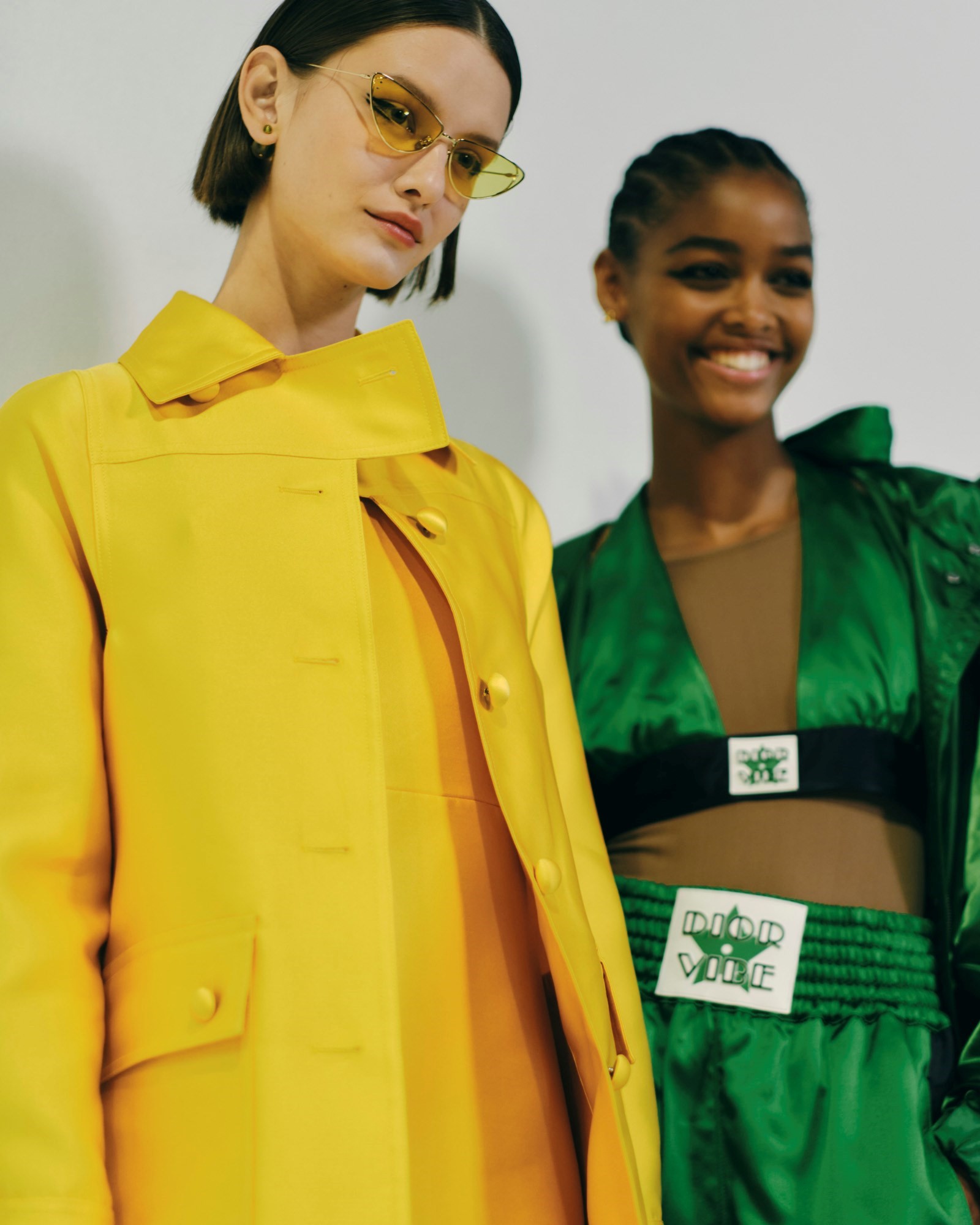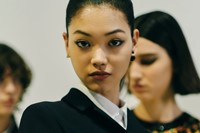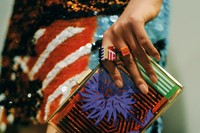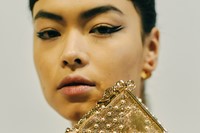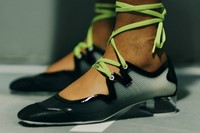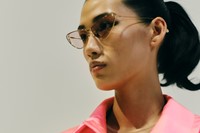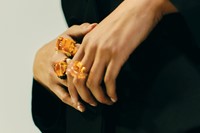Backstage, a few hours before her Spring/Summer 2022 Dior ready-to-wear show, Maria Grazia Chiuri is talking hemlines. Which feels very apt, given that Christian Dior made that name, in part, by dropping them extravagantly from skimpily below-the-knee to mid-calf in 1947. Indeed, Dior invented the oscillation of hemlines as a fashion focal-point, shifting them up and down the leg each season to ring in changes. Long skirts for Dior indicated extravagance of opulence – the availability of fabric after years of wartime hardship. Later, in the 1990s, dropping hemlines coincided with financial crashes, seen as a cynical attempt to flog more fabric and prop up industry. But the brevity of skirts in the 1960s – and the 1980s, and today – are seen as reflective of emancipation. “I am obsessed with the mini-skirt,” said Chiuri. “I think it represents freedom.” Also, without the conceptualisation, Chiuri just likes those skirts. “No other reason,” she laughed.
So her Dior show, while not ubiquitously short, was certainly emphatically so – cropped high on the leg in homage to former Dior artistic director Marc Bohan, who helmed Dior from 1961 to 1989 and whose work Chiuri admires both creatively and ideologically. “It’s very close to my idea of fashion. I love his references of women,” she said. “And he really moved the company from a haute couture maison to a prêt-à-porter house. He gave it a future”

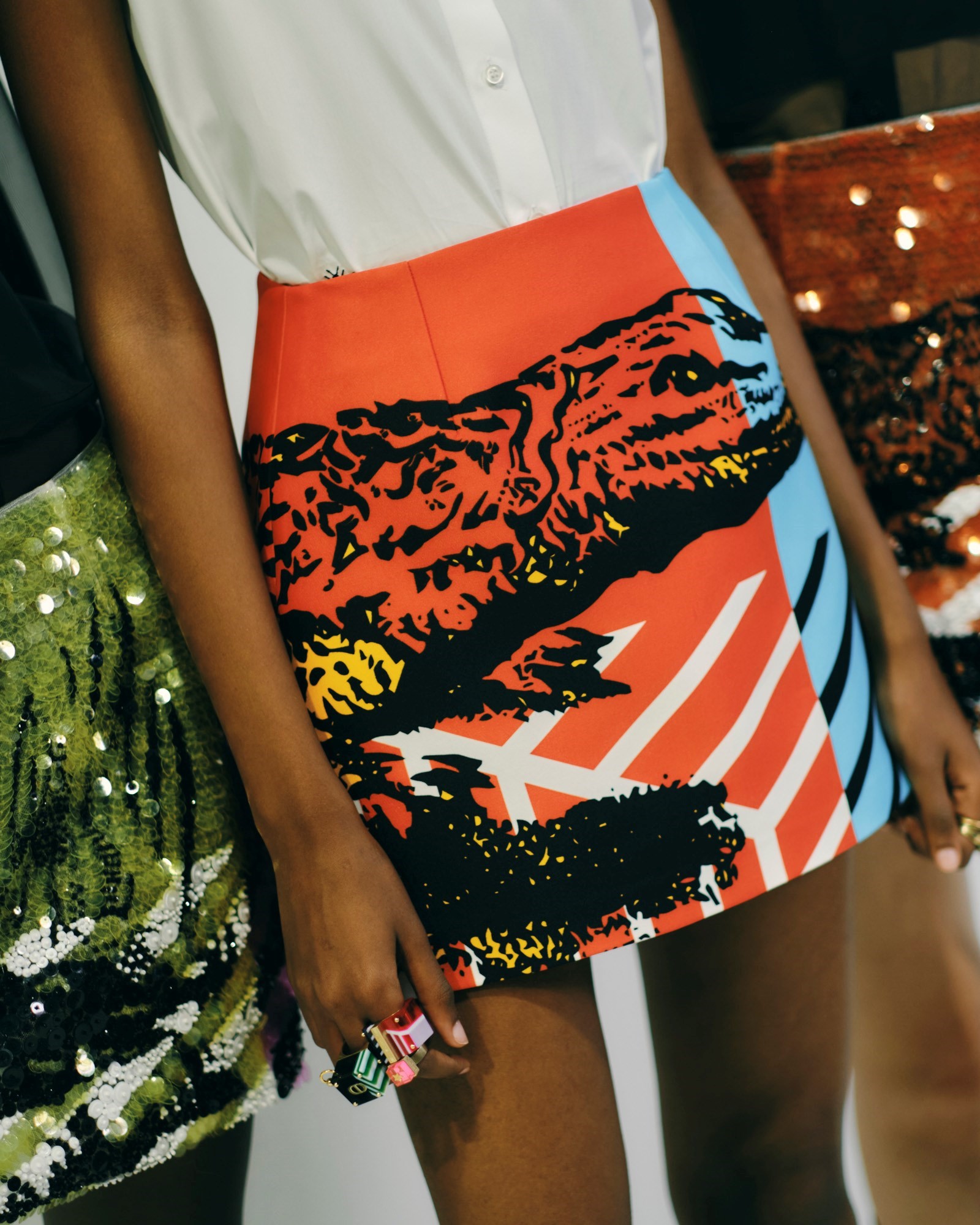
It was the early years of Bohan – his ‘Slim’ look of 1961, specifically – that inspired Chiuri’s silhouettes: short, sharp, brightly-coloured, in luxurious couture fabrics. But Chiuri re-engineered them for now, creating techno satins mixed with recycled nylon and using sportswear techniques to, for instance, embossed rather than quilt a carnage pattern into a Mod mini-coat, or craft Mary Jane shoes with the lightness and flexibility of a sneaker. “Sport helped to emancipate women, to empower women,” she said. “And fashion speaks about the style of life – sport is a contemporary way to dress today” Those bright colours, redolent of soccer kits or Olympic attire, were also unquestionably about optimism. “We can’t forget the last two years – but it is necessary to have an optimistic vision.”
The venue itself was happily pop-coloured, too – designed by the artist Anna Paparatti, a Roman artist who came to prominence in the 1960s, using her work to explore ideas of play and games as windows to the imagination. So the Dior models shifted around a giant gaming board – a version of the 16th-century Italian unicursal race game Jeu de L’Oie, or Game of Goose – as if each was a pawn. Chiuri described the fashion show as a game, or as a performance, with everyone playing their own part. Those are roles we have returned to, now physical fashion shows are being staged – Dior’s was undoubtedly the biggest production to date. “Clothes are important in our life,” she stated. “In the past two years, people thought fashion was something we have to renounce. There are some aspects that are fun, and some that are serious. But we are playing this game.”
